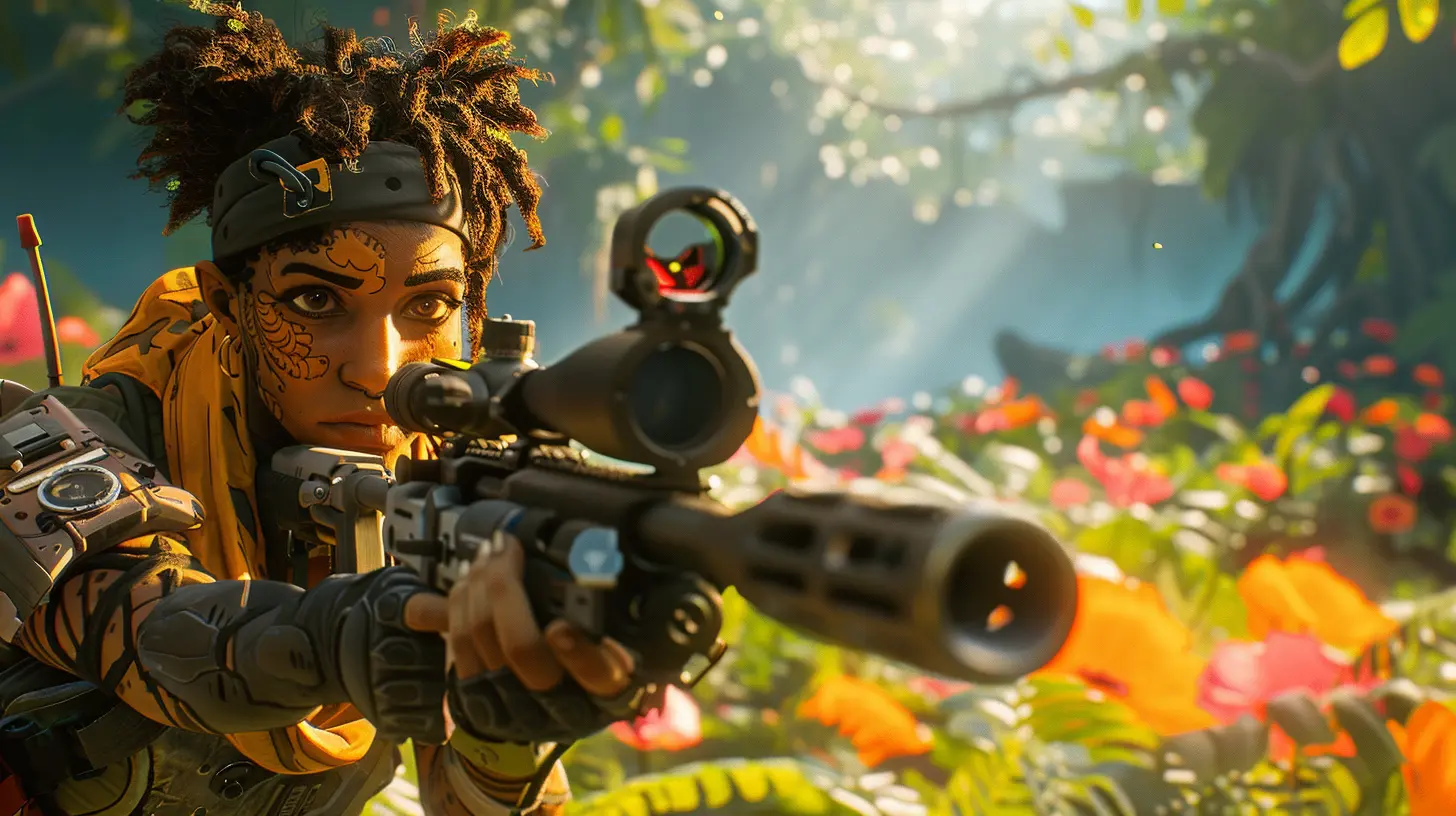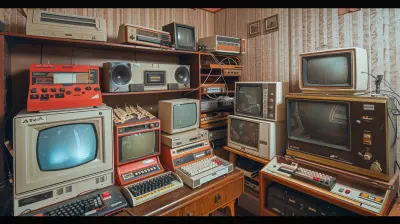The Impact of In-Game Purchases on Player Retention
22 November 2025
Let me ask you something: how many times have you downloaded a free game, only to find yourself contemplating whether you should cough up a couple of bucks for extra lives, a rare skin, or a shiny new weapon? If we’re being honest, probably more times than we’d care to admit. The gaming world has changed dramatically in the last couple of decades, and one of the biggest shifts is the rise of in-game purchases—or microtransactions.
Nowadays, in-game purchases are everywhere. From gacha pulls to battle passes, these bite-sized transactions can make or break players’ experience. But how exactly do they affect player retention? Why are some players so hooked that they keep coming back (and spending more), while others rage-quit and never return? Let’s break it down.

What Are In-Game Purchases?
Before we dive headfirst into the nitty-gritty, let’s make sure we’re on the same page. In-game purchases are, quite literally, items or features that players can buy within a game. These aren’t the same as paying for the game itself. Think of it like going to an amusement park. You pay an entry fee (or maybe not, if it’s free-to-play), and once inside, you’re tempted by all the extras—funnel cakes, arcade tokens, fast-pass tickets. That’s in-game purchases for you.Broadly, in-game purchases fall into two categories:
1. Cosmetic Purchases: These change how things look. Skins, outfits, emotes, you name it.
2. Functional Purchases: These affect gameplay. Extra lives, upgrades, or anything that gives you a competitive edge.
Some games lean heavily on one type, while others mix it up. Regardless, these microtransactions are everywhere, and boy, do they make an impact.
The Role of In-Game Purchases in Player Retention
Here’s the thing: player retention is the lifeblood of any game. Developers don’t just want you to download their game, they want you to keep playing it. Better yet, they want you to spend money while you’re there. This is where in-game purchases come into play.1. Creating Emotional Investment
You know that feeling when you spend time and money on something, and suddenly it feels way more valuable? That’s called the “sunk cost fallacy.” It’s a psychological trick, and in-game purchases tap into it perfectly. Once a player buys something—like a rare skin or a weapon upgrade—they feel more connected to the game. It’s not just a game anymore; it’s their game.Think of it this way: if you buy a fancy yacht skin for your character, you’re not going to ditch the game anytime soon. You’ll want to show it off, use it, and get your money’s worth. That emotional investment hooks players and keeps them coming back.
2. Rewards and Progression Loops
In-game purchases often tie into progression systems. Players want to level up faster, unlock better gear, or beat that ridiculously hard boss that keeps kicking their butt. By offering paid shortcuts, developers appeal to players’ desire for instant gratification.Here’s where it gets sneaky: after spending money to get ahead, players often feel compelled to keep playing to justify their purchase. That battle pass you bought? You’ll grind harder to unlock all the rewards. It’s like how you feel obligated to wear that expensive pair of shoes you probably shouldn’t have bought—except with video games.
3. FOMO (Fear of Missing Out)
Ah, FOMO. It’s the age-old trick that marketers love, and it works like a charm in gaming. Limited-time offers, exclusive items, seasonal events—these are all designed to make players think, “If I don’t buy this now, I’ll never get it!” That sense of urgency drives players to spend money and, more importantly, keeps them logging back in to see what they might miss next.Have you ever logged into a game just because there was a special event? That’s FOMO working its magic. By dangling shiny, limited goodies in front of players, developers create a cycle of return visits and emotional investment.
The Dark Side of In-Game Purchases
Let’s keep it real for a second. While in-game purchases can boost player retention, they’re not exactly sunshine and rainbows. When done poorly, they can tank a game’s reputation faster than you can say “pay-to-win.”1. Pay-to-Win Frustrations
Nobody—and I mean nobody—likes playing against someone who only won because they threw money at the game. Pay-to-win mechanics are the ultimate fun-killer. When players feel like skill doesn’t matter and only cash does, they’re more likely to quit altogether.It’s like playing Monopoly with a friend who keeps buying hotels with imaginary money. Unfair, right? Games that rely too heavily on pay-to-win mechanics can drive away their player base, especially those who aren’t willing to spend.
2. The Wallet Burnout
Here’s another issue: games that push microtransactions too aggressively can lead to wallet fatigue. Nobody wants to feel like they’re being nickel-and-dimed every time they log in. When players feel like they’re constantly being milked for cash, it creates resentment. That resentment? It’s a one-way ticket to uninstall city.3. Gambling Mechanics and Addiction
Let’s not tiptoe around this: some in-game purchases are straight-up gambling. Loot boxes, gacha mechanics, and random pulls prey on players’ impulsivity and often lead to unhealthy spending habits. Worse, they sometimes target younger, more vulnerable players. This not only damages the game’s reputation but opens up a Pandora’s box of ethical concerns.
Balancing Fun and Fairness: The Ideal Approach
So, how do developers use in-game purchases without alienating their audience? It’s a tricky balance to strike, but when done right, it can keep players happy while ensuring the game remains profitable.1. Keep It Cosmetic
The golden rule: if it doesn’t impact gameplay, it’s fair game. Players are usually more than happy to splurge on a cool outfit or an awesome dance emote, as long as it doesn’t give an unfair advantage. Games like Fortnite and League of Legends have mastered this approach, and players love them for it.2. Offer Real Value
Nobody likes to feel ripped off. If you’re going to charge for something, make sure it’s worth it. Don’t lock essential features behind a paywall. Give free-to-play players enough to feel satisfied while offering premium options for those who want more.3. Transparency Is Key
If your game has loot boxes or gacha mechanics, be upfront about the odds. Players don’t mind a bit of randomness, but they hate feeling like the deck is stacked against them. Transparency builds trust, and trust builds loyalty.The Bottom Line: Love It or Hate It, In-Game Purchases Are Here to Stay
Look, in-game purchases aren’t going anywhere. For better or worse, they’re a core part of modern gaming. When done right, they can enhance the experience, keep players engaged, and even fund the development of bigger and better games. But when done poorly? Well, they can ruin everything.As gamers, it’s up to us to vote with our wallets. Support games that respect their players, and don’t be afraid to walk away from ones that don’t. At the end of the day, gaming is supposed to be fun—let’s keep it that way.
all images in this post were generated using AI tools
Category:
In Game PurchasesAuthor:

Madeleine McCaffrey

